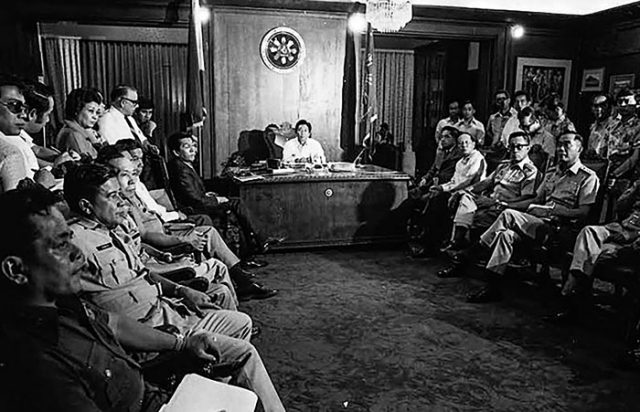
What are the macro-economic effects of the Marcos regime on the lives of ordinary Filipinos?
Last September 21, a TikTok content creator with username @mightymagulang released a video explaining the economic impact of the Marcos administration amid the anniversary week of the declaration of Martial Law.
The video soon earned one million views on the platform and circulated across Twitter and Facebook.
The TikTok creator, whose real name is Mona Magno-Veluz, introduced herself as someone with a Master’s Degree in Applied Business Economics.
“And today, I want to revisit the macro-economic effects of the Marcos era [on] the lives of the Filipino people. No politics, just empirical economic data,” she said.
@mightymagulang#September21 | #todayinhistory Martial Law was declared in 1972. #kasaysayan #learnontiktok #tiktoku♬ original sound – Mighty Magulang 🇵🇭
Social media users cheered Magno-Veluz for her informative video.
gotta love this rare tiktok account that isn’t spewing misinformation pic.twitter.com/n7NGm87ngZ
— N/A (@notnormancuizon) September 21, 2021
Rundown of economic data and facts
Wages dropped during the Marcos era
Magno-Veluz compared wages of workers in 1962, pre-Martial Law, and in 1986, post-Martial Law.
“So a farmer who earned P100 in 1962 earned P70 in 1986. An unskilled worker who earned P100 in 1962 earned P26 in 1986. A skilled worker who earned P100 in 1962 earned P28 in 1986,” she cited.
In a report by Philstar titled “Debt, deprivation and spoils of dictatorship,” economists from the University of the Philippines also stated that income distribution among the poor worsened during Martial Law.
“Income distribution also worsened during Martial Law, with the poorest segment of society seeing a decline in their share of the total income between 1971 and 1979. The richest 10 percent, on the other hand, enjoyed a much larger piece of the pie,” the report said.
Filipinos became poorer
Magno-Veluz also compared the poverty level and underemployment rates before and during Marcos’ military rule.
“In 1965, 41% of the Filipinos lived on the poverty level. In 1985, the poverty level was at 58%. So 6 in every 10 Filipino families were poor. In 1973, underemployment and unemployment was at 10%. In 1982, this was at 33%. The number tripled,” she said.
She also noted that these dire figures were also compounded with the high costs of basic commodities.
In the same Philstar report, it was also stated that poverty incidence when Marcos rose to power was at 42%.
By the end of his rule, 59% of Filipinos were poorer.
The underemployment and unemployment numbers at that time were also staggering.
“From 1978 to 1983, the number of workers without jobs increased from 800,000 to 1.2 million. But the figure for underemployment was more shameful, going from 1.6 million to 5.6 million,” the report said.
Philippine loans skyrocketed
Magno-Veluz explained that the Philippine debt during Marcos’ time ballooned to the point that the country had to declare a debt moratorium in 1983.
She likened this to the consequences after a credit card holder maxed out his or her credits.
“You have several credit cards and you maxed them all out. You cannot meet your obligations because the minimum payment required is three times your income. That was the Philippines in 1983,” the TikTok user said.
Magno-Veluz also countered the myth of large infrastructures built during the late dictator’s rule.
“The infrastructure spending was the justification for the foreign loans. The Marcos era was built on debt-driven accomplishments,” she said.
In the Philstar report, Ronald Mendoza, dean of the Ateneo School of Government, concisely explained the impact of Marcos’ debt-driven accomplishments.
“The trouble with debt-driven growth with populist tendencies is that it produces a buoyant economic environment—at least in the beginning. As long as the facade of investment for competitiveness is still there, then investors continue to pour money into the economy, which keeps it growing,” Mendoza was quoted as saying.









